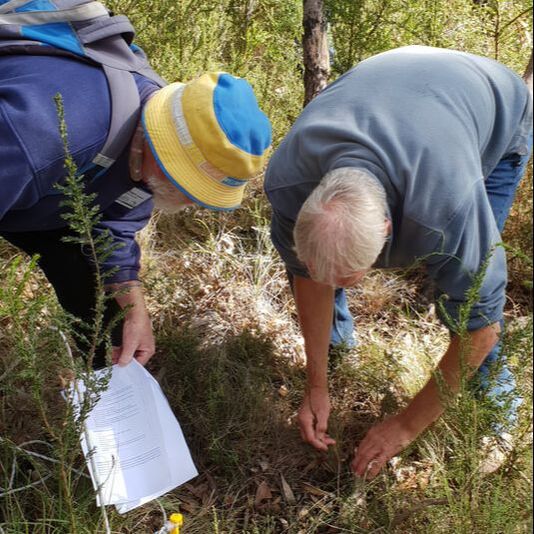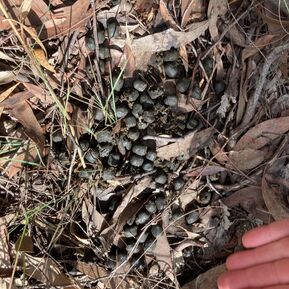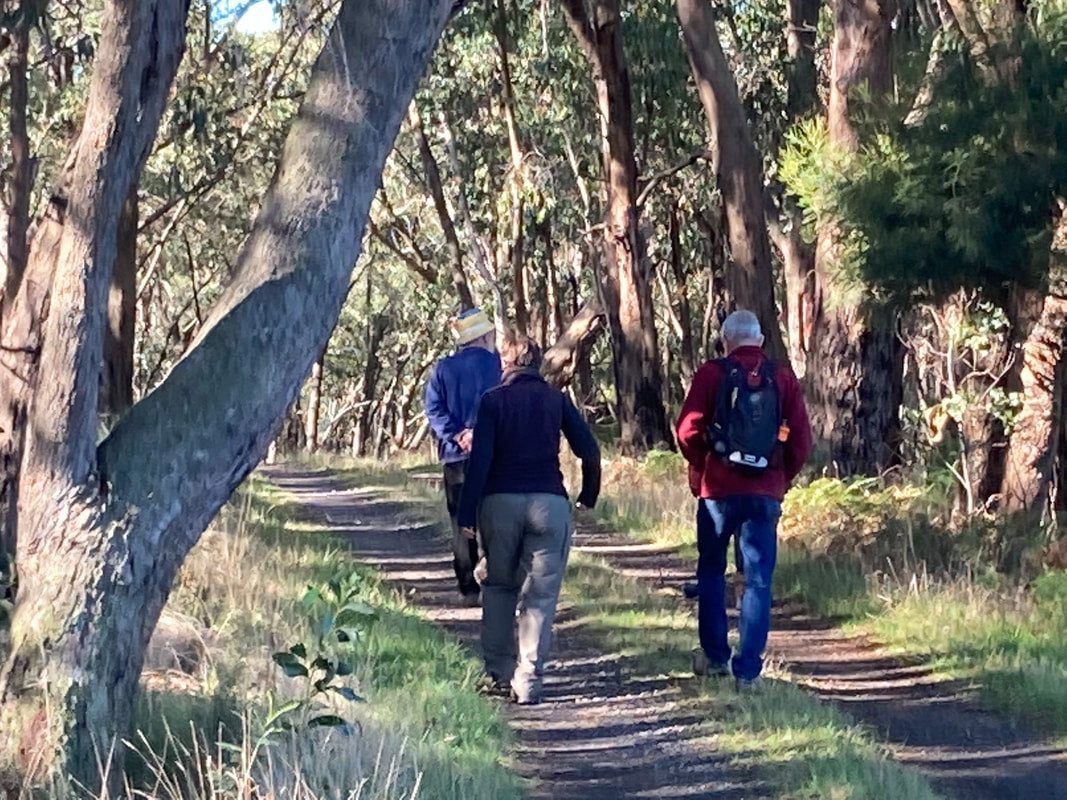|
Mike Hall, October 2021 What a saga this has been! Covid, as for so many enterprises, has not been our friend. It delayed our planned aerial survey for over a year, and similarly for the vegetation (ground) survey. Hopefully we will be on our way again soon. A recapIn late 2019, the CDMC received funding of $25,000 from Melbourne Water to conduct survey work in the Cardinia Creek catchment as a part of their Liveable Communities grant scheme. Though the original plan was to use most of this funding for a camera-trap survey, this proved to be beyond the budget if we wanted meaningful data. After a lot of head scratching and conversations with representatives and scientists from Melbourne Water and Parks Vic, we decided on a new vegetation survey method which had been developed by Dr Ami Bennett of Melbourne University. This survey lends itself very well to the use of citizen science and does not require expensive equipment. This reduction in cost means we will have funds left over to gain the services of a research scientist to help with both the implementation and interpretation of the survey and the data generated. In May this year, after many covid delays, we were finally able to hold a field training day, conducted by Dr Bennett herself. Twelve local community members, our “citizen scientists”, were taught the survey technique, with the aim of them training further citizen scientists to conduct the survey. It was a lovely day, we all learned heaps, became experts in wombat, roo and deer poo and had a lot of fun. All up we so far have about 25 interested citizen scientists either ready to go, or waiting for the chance to be trained up soon. What does the survey entail?The survey is a vegetation impact and faecal scat count survey. The method involves generating random transects in the landscape 150m long. Working in pairs, observers move along the transects, and at 5m intervals assessments are made of the vegetation damage and faecal scat counts in four quadrants, N. S, E & W. At the same time, observations of other deer damage is recorded ie tree rubbing, wallows, resting sites and trails. Each transect takes between 1 ½ to 3 hours. These findings are recorded on a chart, from which the data can be downloaded and the results tabulated. What outcomes does the survey give?With the vegetation damage being split into that which is above one metre and that which is below one metre, it allows an estimate of the relative damage being done by deer against that being caused by native animals – native animals do very little browsing above one metre. The purpose of doing the scat count is that it gives a very good relationship over time with the deer population density – ie as the deer number rises and falls, the scat count rises and falls in a linear relationship. Being able to graph the amount of vegetation damage against the rise or fall of the deer population will finally give the scientific and local community data on the severity of deer related damage matched against population densities. What are the benefits to the CDMC and the broader community?The CDMC are committed to protecting our environment through humane deer reduction. The information generated by the survey will firstly quantify the amount of damage being done by deer. There is very little scientific data currently to hand about the effect of deer on the environment, nor which environments are the hardest hit and by which species of deer. This sort of data is critical in understanding this and in working out how to protect the most sensitive environments. Secondly, being able to map the recovery (or decline) in the environment as deer numbers fall (or rise) will give us an indication as to whether the current culling efforts are having an effect both in deer population density and vegetation health, where they are having an effect and how many deer will need to be removed for the environment to recover. What now?As soon as covid allows, we will be able to get back into the field with all our citizen scientists ready for either further training or immediate action. The transects have been identified and the required equipment purchased. With the warming of the weather and an easing of restrictions, you should see us out there within a few weeks or so. Getting involvedThis is a citizen science project which will have university oversight. If you are interested in any of the following:
To learn more or register your interest, contact the email below. But that is not allWe have recommenced our discussions with Deakin University (through Prof. Euan Ritchie) and hope to have a research scientist on board to oversee and interpret the results of our citizen science data as it comes in. We hope this will be the beginning of a long term relationship with Deakin Uni in helping to manage and understand the deer problem in the Cardinia Creek catchment. We will also be looking at involving students from the local high schools in this and other projects. Watch this space. For further information or if you would like to be involved in this project, please contact us at: [email protected]
0 Comments
Your comment will be posted after it is approved.
Leave a Reply. |




 RSS Feed
RSS Feed
